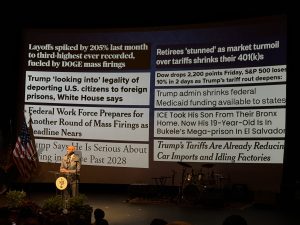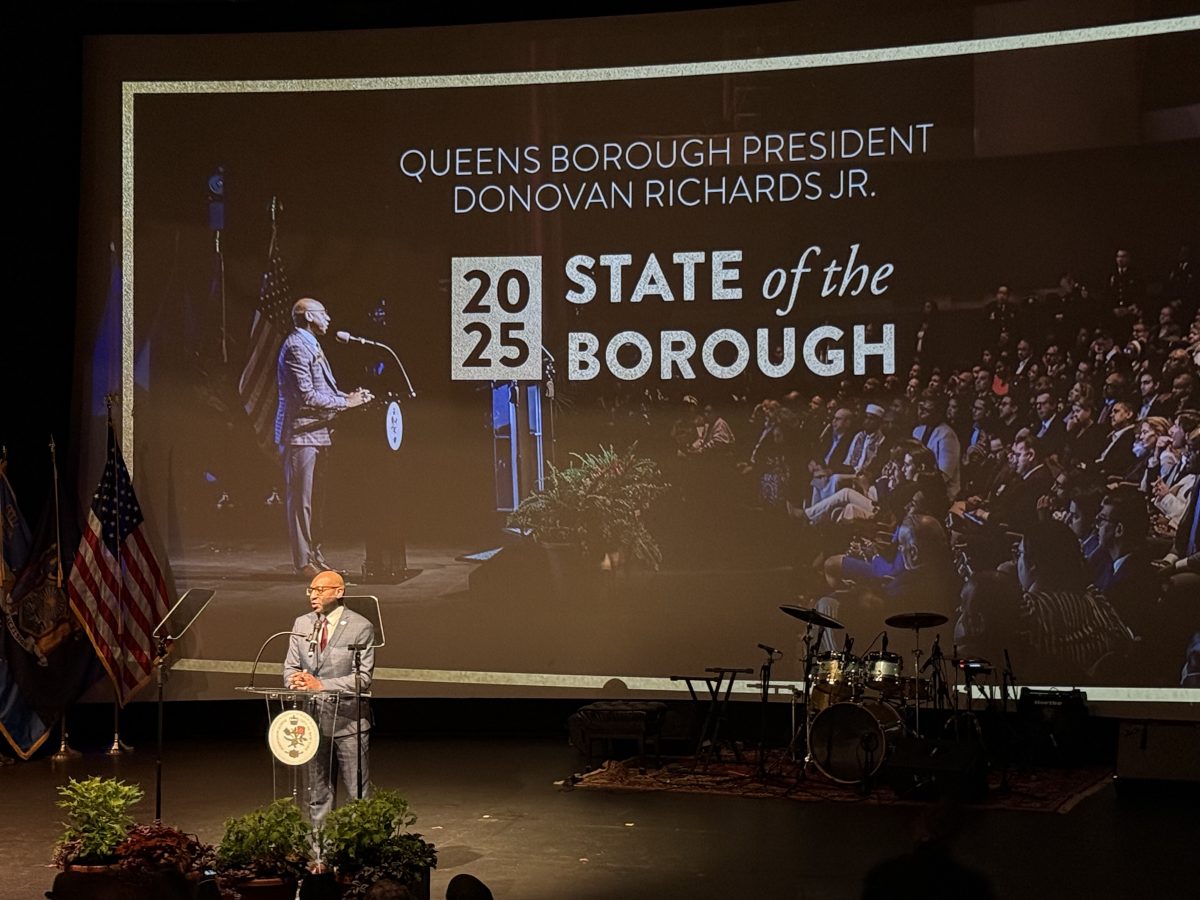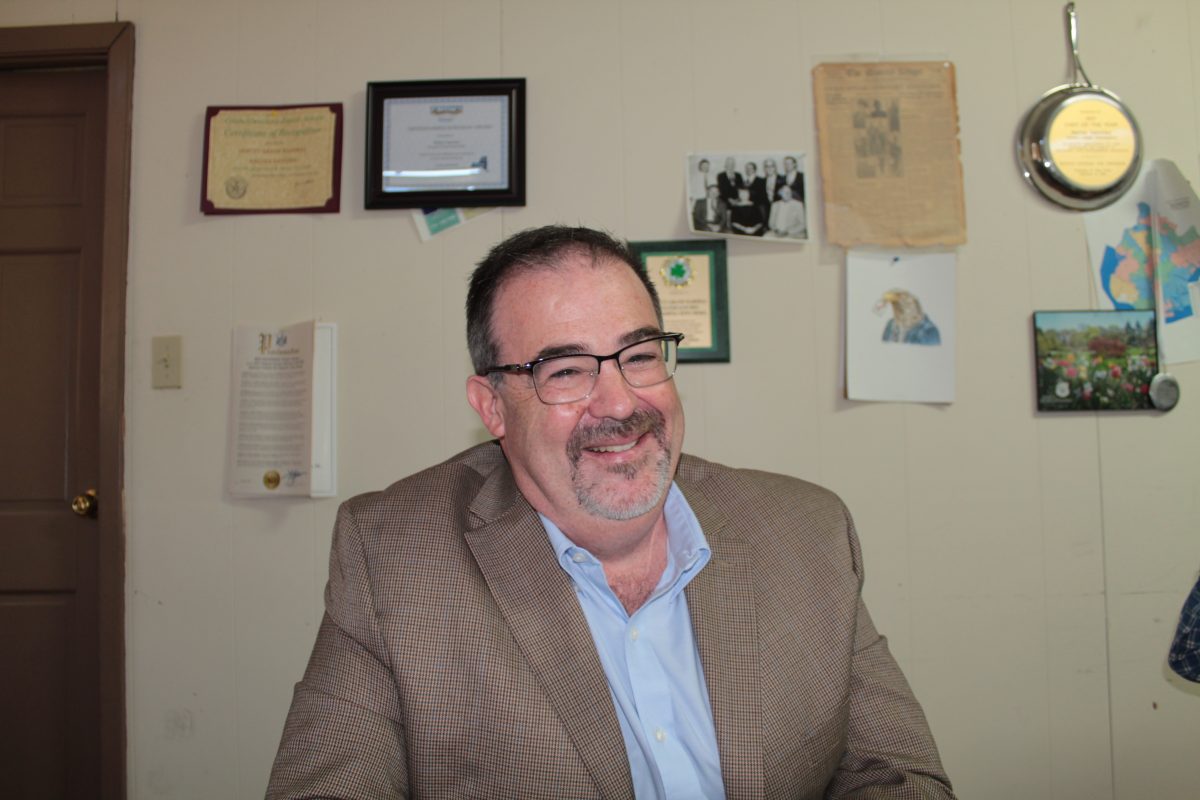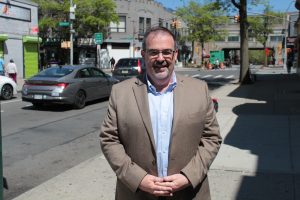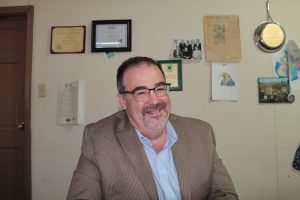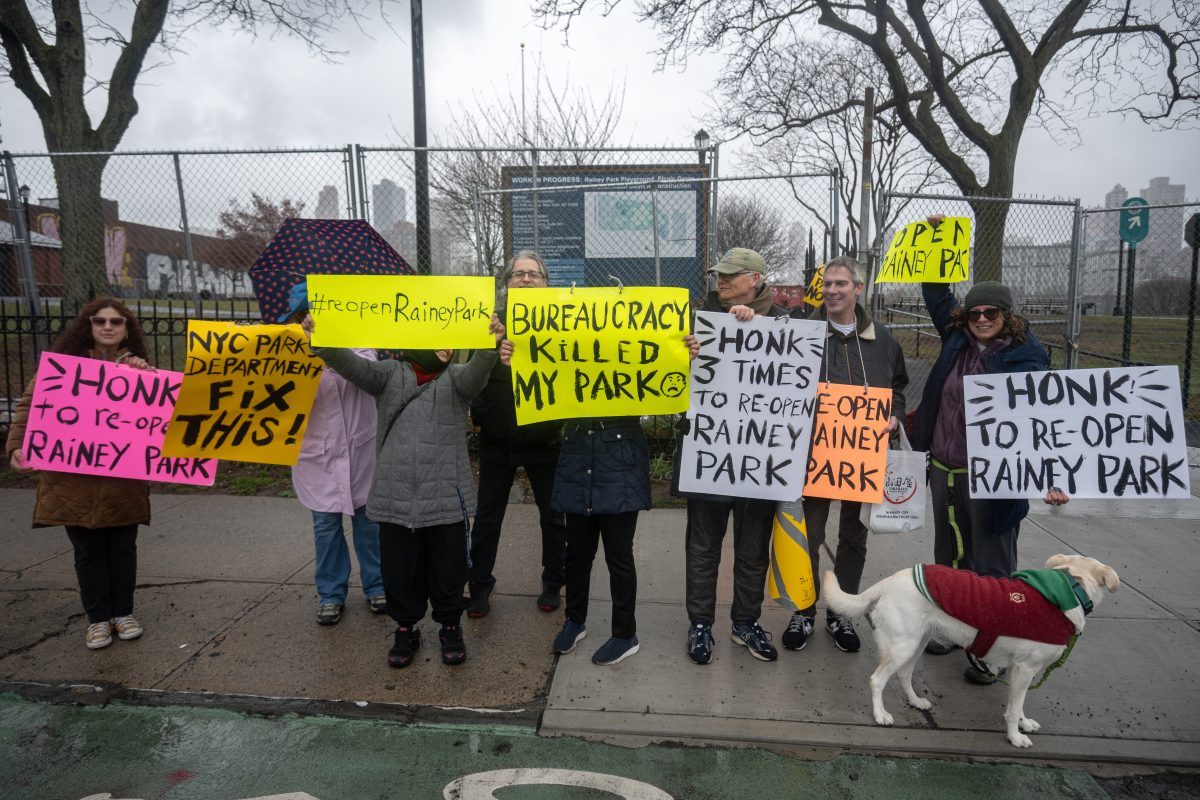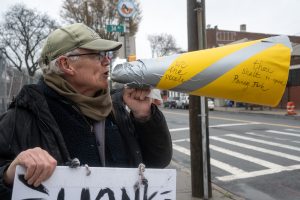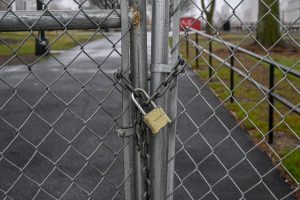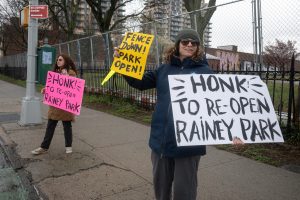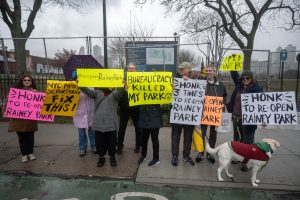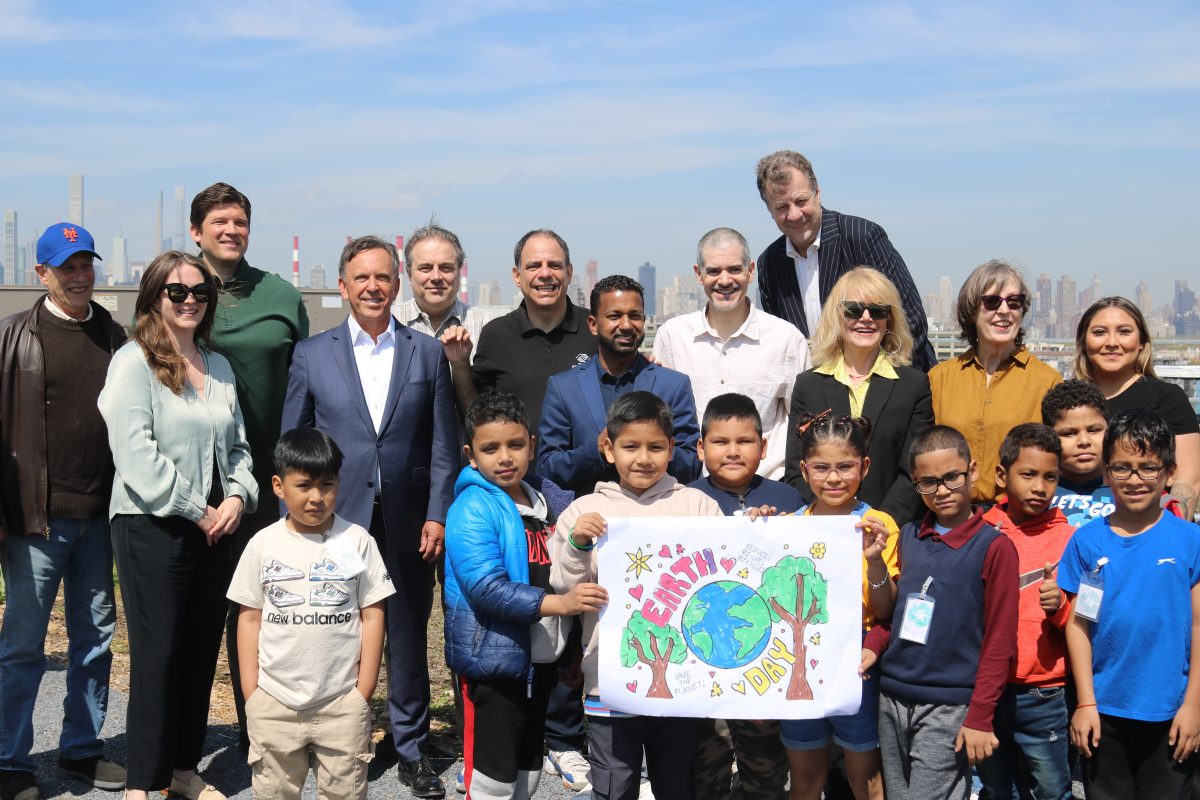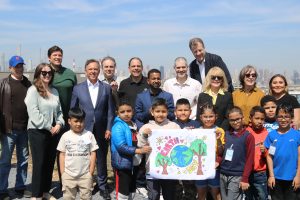Borough President Richards Outlines Bold Plans in Annual Address
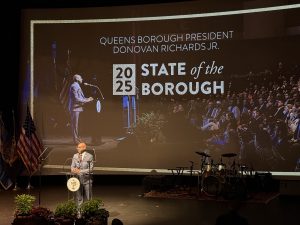
MOHAMED FARGHALY
mfarghaly@queensledger.com
In his third annual State of the Borough address, Queens Borough President Donovan Richards Jr. delivered an ambitious and determined vision for the future of the borough. Speaking before a full house at the Queens Theatre on April 25, Richards reviewed his administration’s progress over the past year, emphasizing key initiatives in education, healthcare, economic development, social services, and environmental sustainability.
The address kicked off with a heartfelt performance of the Star Spangled Banner by students from the Frank Sinatra School of the Arts. The event brought together a diverse group of leaders, starting with New York State Comptroller Thomas DiNapoli, who took the podium to express his admiration for Borough President Donovan Richards and the vibrant Queens community. Public Advocate Jumaane Williams also addressed the crowd, praising Queens as a microcosm of America, with its rich blend of cultures and immigrant stories. Williams commended Richards for his deep understanding of the borough’s complexities and challenges.
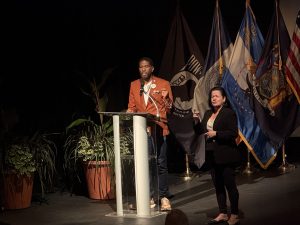
The evening continued with a performance of Summer Wind by the renowned RIOULT Dance New York, before Speaker of the NYC Council, Adrienne Adams, delivered a pointed critique of the Trump administration. Adams emphasized the importance of standing firm in Queens to protect New Yorkers, underscoring her partnership with Richards in “Trump-proofing” City Hall. Queens District Attorney Melinda Katz also spoke, thanking local officials and the community for their support in tackling crime. She highlighted efforts to dismantle gangs, remove illegal weapons from the streets, combat human trafficking, and educate the public on scams, ensuring the borough remains safe and resilient.
Richards began his speech with a sharp critique of federal policies, particularly those under former President Donald Trump, which he argued posed significant threats to the people of Queens. “Now we’re going to do things a little differently this year, no fluff, no rhetoric, because we don’t have time to play games.” Richards said. “The state of our borough is precarious, Queens is under attack. Our wallets, our families, our futures, our values, our way of life.” His defiant tone set the stage for the rest of the address, where he emphasized the borough’s resilience and diverse strength as the key to overcoming these challenges.
Immigration and Social Services
Richards highlighted his administration’s efforts to protect and support Queens’ immigrant communities, underscoring initiatives like the “Know Your Rights” workshops held in Corona and Queens Borough Hall, as well as resource fairs in Flushing. His office’s Immigration Task Force continues to connect residents to essential services, including legal and community support.
Notable investments included:
Make the Road Community Center: $1.8 million to support this Corona-based center, which provides legal services, childcare, and educational opportunities for local residents.
Variety Boys and Girls Club: An additional $5 million toward expanding this Astoria-based facility, following a previous $5 million investment in 2020.
River Fund Center: $3 million allocated for Richmond Hill’s nonprofit that provides food pantry services, SNAP enrollment assistance, and more.
Arverne East Aquatics Center: $46 million secured from the state, alongside an additional $36 million from city and borough funds, aimed at creating a state-of-the-art facility for the community.
Richards also discussed the planned $132 million Roy Wilkins Recreation Center, with $15 million allocated for renovations to the existing facility.
Borough President Richards also pointed to the significant strides already being made to address the swimming disparity gap, citing recent investments in public swimming pools in underserved neighborhoods. He specifically mentioned the allocation of resources to build and refurbish pools in locations where they are most needed, such as in the communities of Far Rockaway and South Jamaica. These new and renovated facilities will serve as vital community hubs, offering swimming lessons, water safety programs, and recreational opportunities for youth and adults alike. Richards emphasized that these pools are not just amenities—they are life-changing investments that equip residents with critical skills, promote physical activity, and enhance community cohesion.
Education Initiatives:
Richards focused on education as a cornerstone of Queens’ future, highlighting the $25 million allocated this year for Queens public schools, including the creation of new culinary arts kitchens at several schools. His administration also secured funding for:
$1 million to renovate P.S. 177Q, a special education school in Fresh Meadows.
Construction of a new 547-seat elementary school in Long Island City and a 700-seat annex at Forest Hills High School.
The opening of Motion Picture Technical High School and the upcoming Northwell School of Health and Sciences.
Since taking office, Richards has directed over $78 million in capital funding for school improvements.
Economic Development and Job Creation:
On the economic front, Richards detailed the progress of the $19 billion redevelopment of JFK Airport, including the $100 million refresh of Terminal 5 in partnership with JetBlue. This project, expected to create over 15,000 jobs, is a significant part of the borough’s broader economic growth strategy. Richards also noted that over $1 billion in contracts from the JFK redevelopment have been awarded to Queens-based businesses.
The Global Tech and Innovation Center, located at One Court Square, also received attention, with $5 million in funding for its development. Richards is committed to making Queens a hub for tech startups and innovation, a goal reinforced by the success of the borough’s annual Queens Tech and Career Expo.
Healthcare Investments:
Queens’ first standalone cancer center at Jamaica Hospital, funded with $180 million in partnership with Memorial Sloan Kettering. Reflecting on his personal experiences, Richards shared a poignant story about his grandmother, who was forced to navigate an inadequate healthcare system that ultimately failed her. He vowed to continue advocating for people in similar situations, ensuring that no one is left behind due to systemic inequities. His commitment to improving the borough’s healthcare infrastructure stems from a deeply personal place, as he understands the critical importance of accessible, quality care for all, particularly those in underserved communities.
The groundbreaking of a $30 million Gotham Health Clinic in Rockaway Village, slated to serve over 19,000 patients annually by 2027.
The expansion of St. John’s Episcopal Hospital’s labor and delivery unit, currently under construction. Richards also addressed the troubling maternal and infant mortality rates in Queens, particularly among Black women, who experience higher rates than any other demographic group. He emphasized that the borough’s new $30 million labor and delivery unit, under construction at St. John’s Episcopal Hospital, is a vital step toward addressing this inequality. No woman, Richards argued, should have to leave her community to receive the care she deserves during one of the most important moments of her life. The new facility will offer comprehensive care to expectant mothers, helping to reduce these disparities and ensure healthier outcomes for both mothers and infants in Queens.
Since taking office, Richards has allocated $36 million toward improving healthcare facilities across the borough.
Environmental and Energy Initiatives:
In the realm of environmental sustainability, Richards emphasized his administration’s commitment to green infrastructure, citing more than $44 million invested into parks across Queens, including major upgrades at Cunningham, Brookville, Baisley, and Juniper Valley parks.
Champlain Hudson Power Express, which will bring hydroelectricity from Canada to Queens starting in 2026.
The transformation of the Ravenswood Generating Station in Long Island City into a renewable wind energy facility, which is expected to power 700,000 homes.
Richards also pledged $5.2 million for hydroponics labs in Queens schools and continued expansion of the borough’s Open Streets program.
Transportation Improvements:
Richards provided an update on several key transportation initiatives, including the upcoming $30 million Queens Bus Network Redesign, set to take effect in June, which will improve service on 20 bus routes and introduce 17 new routes.
Another major transportation project is the $5.5 billion Interborough Express, which will link Queens to Brooklyn, cutting commute times and benefiting millions of riders annually.
Affordable Housing:
Richards also reviewed the borough’s progress on affordable housing, noting the following developments:
Willets Point Development: Phase one, which includes 2,500 affordable units, a new school, and public park space, is slated for completion in 2026.
The One LIC Plan, which would add 14,000 affordable housing units in the Queensboro Bridge area, entered the public review process in April.
Arverne East: A community that has already seen hundreds of families move into newly built affordable housing units.
Beach Green Dunes III: New affordable housing units in Far Rockaway, with 116 units launched in a recent housing lottery.
Looking Forward:
In his closing remarks, Richards urged Queens residents to stand united in the face of national challenges, asserting that their collective strength would continue to drive the borough’s success. “I choose you, Queens. I choose the borough that builds riches, not burns them. I choose the borough that opens its arms to the world, not closes its doors to it,” he said.
